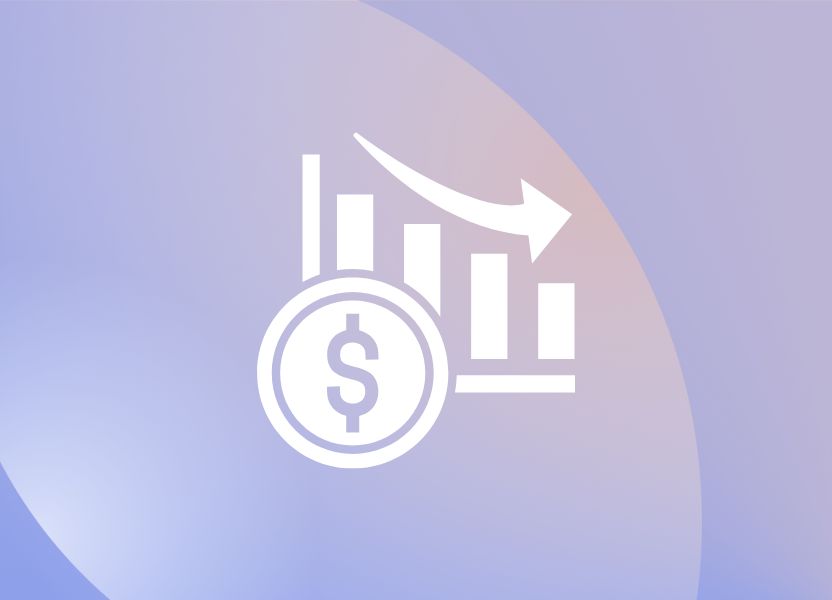In the early 2000s, Chinese demand underpinned a commodity boom some believed might extend for decades. Commodity traders thrived, none more so than the Singapore-listed Noble Group.
Its share price rose a staggering 18-fold between 1998 and 2011, making it Asia’s best-performing stock outside the tech giants like Tencent. By 2011, Noble Group boasted revenue comfortably inside the top 100 companies globally and was Asia’s largest commodity trader. Seen as an established blue chip, Noble began to rival the likes of Glencore and Cargill.
The company today is a shadow of its former self. Targeted by short sellers in 2015, Noble was embroiled in an accounting fraud scandal that led to a plummet in its market value, a debt restructuring, and eventual delisting from Singapore’s stock exchange.
Noble Group is an interesting case study for Transparently.AI, which has an AI-powered solution to detect accounting manipulation and fraud in companies.
Our AI solution showed evidence of financial stress and poor accounting quality much earlier than the short sellers, in fact even throughout the long commodity bull market from 2001 until 2011.
Read on to find out what we discovered. We would hasten to add that our analysis is on the Noble Group Limited entity that existed prior to its restructuring in 2018. We offer no insights into the current Noble Group Holdings Limited entity that operates what's left of the company, nor is anything we comment on intended to infer anything about the current operating entity. It is, for all intents and purposes, a separate company from its old self, as they have pointed out in detail.
What is Noble Group?
The main research shop that targeted Noble Group in 2015, Iceberg Research, likened the company in one report to Enron, the poster child for corporate accounting scandals. It’s not our place to comment specifically on this comparison, but what we can do is comment on factual similarities and divergences between the two.
As with Enron, Noble Group’s core business was commodity trading. It bought commodities from producers and sold them to end users, acting as an intermediary, whereas Enron began with natural gas and branched from there, Noble began with bulk commodities, branched into agriculture and then into energy.
Commodity trading is a risky business: Margins are thin, the working capital requirement is onerous, and fluctuations in currencies and commodity prices can quickly threaten vital access to short-term finance.
As a consequence, commodity traders are incentivised to exaggerate their financial strength and are frequently involved in accounting scandals. In recent years there have been several in Singapore alone, including Agritrade International, Hin Leong Trading and ZenRock Commodities Trading.
A commodity business can be asset light or asset heavy, depending on whether a firm invests in logistics assets such as ships, ports, pipelines, storage and processing facilities. Some commodity traders invest in upstream businesses to secure offtake from mines or supply from farmers.
When asset light, traders tend to be volatile businesses but relatively safe if well capitalized. When asset heavy, traders become financially strained when commodity prices are weak or if interest rates rise. An asset-heavy model only makes sense to lock in supply or to secure wider margins.
In short, commodity trading is a difficult business, even in the best of times.
Noble in 2001-2011: What our anti-fraud system uncovered
Through the commodities boom from 2001 until 2011, Noble’s manipulation risk score on our system hovered between 55% and 60%. This score indicated significant issues with accounting quality and meant that Noble was generally in the bottom 35% of companies globally for estimated accounting quality and transparency.
Figure 1 shows the front page summary from the risk report that the Transparently.AI system produced for Noble Group’s 2002 financials. The system gave Noble a “D” rating, which signals poor accounting quality and an urgent need to investigate the company further.
The manipulation risk score gave Noble a joint probability of 56% that its accounts were manipulated and that the company was headed to failure.
In other words, the system gave better than even odds that problems at the company were serious enough to lead to potential failure. The model estimated potential losses to stakeholders of between $124 million and $230 million. At the time, this represented between 50% and 95% of Noble’s market capitalization.
The risk distribution charts showed that Noble was in the 83rd percentile globally for account manipulation risk.
Figure 1: Excerpt from Transparently.AI’s report for Noble in 2002

Source: Transparently.AI
In the context of a booming commodity sector, these poor scores suggested that something was amiss in the burgeoning Noble empire. Companies with accounting concerns in prosperous times invariably stumble when boom turns to bust - and so it was with Noble.
In short, anyone following the AI system would have been suspicious of Noble Group’s accounting from the very beginning and the situation never improved. To be sure, the system was very early anticipating Noble’s demise. Fraudulent companies can be hugely popular with investors for years before finally coming unstuck.
In the decade to 2011, the company consistently flagged concerns in risk clusters relating to growth signals, gearing and credit. Figure 2 for example shows an excerpt from the 2007 report which shows that Noble’s ratio of liabilities to equity, a key measure of gearing risk, was more than three times the regional median.
Growth appeared unrealistically strong and was heavily dependent on debt finance. There was persistent evidence of aggressive smoothing.
Figure 2: Noble always demonstrated a dangerous level of gearing

Source: Transparently.AI’s 2005 risk report for Noble
Most concerning, our AI system repeatedly identified income quality as a primary concern at Noble Group. The system raised concerns pertaining to the abnormally low effective tax rate, often a sign of overstated income, the high share of income derived from affiliates, and an abnormally high share of income from non-operating and “other” non-operating sources.
From 2005 onwards, the system began to caution about the abnormally high share of income coming from joint ventures and associates. From 2009 onwards, the system identified interest capitalization and extraordinary credits as additional income quality concerns.
When a company generates a high level of income from affiliates and non-core sources, it can be a sign that its core operations are not generating sufficient income to sustain the business. Moreover, the higher the income generated from non-core operations, the greater the scope for income manipulation.
From Noble’s earliest years after listing, the AI system also cautioned about investing activity and asset quality. The signals related to depreciation, investment in associates, abnormally high disposal of fixed assets, and unusual growth in long-term assets in relation to capex.
The system also flagged possible business manipulation in relation to expenses, abnormal cash generation and cost of goods sold.
One notable feature of Noble’s business from the beginning was its extremely high level of accounts payable in relation to equity (see Figure 3).
In an average year, accounts payable exceeded equity, pointing to an excessive reliance on credit to finance operations. It also pointed to weak cash flow generation in relation to income. This can be a consequence of strong revenue growth.
Nevertheless, the excessive level of accounts payable represented a possible incentive to manipulate the financial statements to hide the company’s fragility.
Figure 3: High levels of accounts payable 2003-2007

Source: Transparently.AI’s 2005 risk report for Noble
Noble after the commodities boom
Noble fared remarkably well through the turmoil of the Global Financial Crisis in 2008, largely due to the enormous Chinese economic stimulus which bolstered demand for commodities.
In fact, Noble recorded its highest years for net profit in 2009 and 2010. Perhaps sensing the commodity bull run was drawing to a close, Richard Elman, the founder and chairman of the Group, stepped down as CEO at the end of 2009.
After relinquishing the CEO role, he continued as non-executive chairman. However, the transition of leadership proved intensely challenging. The group had five CEOs in the ensuing seven years: A sure sign of underlying problems.
Elman’s replacement, Ricardo Leiman, decided to take Noble to an asset-heavy model and embarked on a S$2 billion spending spree in 2009 and 2010, investing in a range of assets and adding to its already considerable debt.
By 2011, however, commodity markets were peaking and thereafter in decline. This reversal in the commodity environment pressured all commodity traders including Noble.
The asset-heavy model threatened to sink Noble in a prolonged commodity downturn.
Yusuf Alireza, the former co-president of Goldman Sachs’s Asia ex-Japan unit, replaced Leiman as the CEO in April 2012.
His mission was to restore Noble to an asset-light model, most notably by selling Noble Group’s agricultural business to China’s Cofco Corp in 2014.
The damage caused by Noble’s 2009-10 spending spree at the peak of the commodity boom, though was far from obvious, in Noble’s profit numbers.
From the time of Elman’s exit in 2009 until the end of 2014, Noble’s reported net profit totalled S$2.4 billion. The profit numbers between 2009 and 2013 dwarfed Noble’s profit prior to 2008.
It was remarkable that such a highly leveraged commodity company could sail through the worst financial crisis since the Great Depression and a subsequent commodity downturn with such resilient profits.
Noble's negative cash flow
The cash-flow statement, however, told a different story.
Over the same period, Noble’s cumulative operating cash flow was negative S$500 million; the company was bleeding cash. Cumulative free cash flow was negative S$2.4 billion over the same five year period to 2014.
The divergence between Noble’s net profit and operating cash flow was striking and eerily reminiscent of Enron. Unlike Enron, however, Noble was a genuine commodity-trading business. Affirming this, Noble’s margins were thin, around half those of major competitors. This made it improbable that Noble was engaged in account manipulation remotely on the scale of Enron. Enron’s margins were completely unrealistic.
Moreover, the accounting rules governing mark-to-market, or fair value accounting, had changed since Enron’s time. Enron was able to record the full NPV of long-term commodity contracts as revenue as soon as they were signed.
In fact, Enron was able to double count this revenue by selling the contract to an off-balance sheet entity.
Under IFRS at the time of Noble, firms were only allowed to recognize profit at the inception of a contract if the contract price differed from future prices or, in the absence of a futures curve, prices proposed by a team of experts.
Nevertheless, aspects of Noble’s accounts appeared unrealistic. In particular, Noble made up for its wafer-thin margins by increasing its inventory turnover. Between 2010 and 2014, Noble’s reported inventories fell by S$125 million while its turnover grew by 228%. Inventory days fell from 26 days to 13 days.
Given fixed shipping times and other inevitable delays associated with bulk and agricultural commodities, this improvement in inventory efficiency was remarkable and indeed suspicious.
Noble in 2011-2015: Accounting quality deteriorates
Through the period from 2011 until 2015, Noble’s manipulation risk score steadily deteriorated on the Transparently.AI system. The system gave Noble a rating of D in 2012. The risk score of 59% put Noble in the 82nd percentile for manipulation risk globally – no mean feat for a Fortune 500 company.
All of the same problems observed from 2001 until 2011 persisted: the reliance on affiliates, associates and joint ventures, the abnormally low effective tax rate, the income smoothing and accruals, the gearing and credit concerns, and the incredible working capital strain.
From 2010 onwards, accounts receivable turnover and accounts payable turnover were suddenly flagged as items requiring extreme care. It appeared that Noble, a group with extreme working capital strain, was suddenly getting paid much quicker than before and far quicker than peers.
In addition, the company was also paying its suppliers far quicker than before and quicker than peers. How this might be possible in a company with negative operating cash flow was a mystery and reflected the incredible acceleration in inventory turnover. It was as if inventories had disappeared from the balance sheet.
Figure 4: Noble’s receivable turnover from 2010 onwards

Source: Excerpt from Transparently.AI 's risk report for 2005
Interest coverage was incredibly low. For example, the ratio of EBITDA relative to interest expense in 2011 was a mere 2.58x in comparison to the regional average of 45.3x. Now, the lower the ratio, the more the company is burdened by debt expenses and the less capital it has to use in other ways.
Noble therefore had a high interest expense, which was matched by similar measures suggesting the company might have more debt than it was reporting. The high interest expense made little sense given that inventory funding costs had fallen drastically in relation to turnover. In a commodity trading business, inventory is typically the dominant expense.
From 2011 onwards, there were also new concerns relating to corporate governance and asset quality. Accounts restatement had become more common and the system picked up a number of statistical anomalies in the corporate governance risk cluster. In particular, dilutionary capital issuance was becoming extreme.
By the end of the 2015 financial year in May 2015, the AI software had given Noble a risk score of 80%, putting it in the 97th risk percentile globally. The company by this stage looked like a basket case on our system. However, the firm would not collapse into insolvency until 2018 when it was forced to restructure.
Noble hits an Iceberg
On February 15, 2015, an independent research house known as Iceberg Research issued the first of four immensely damaging reports on Noble Group. It was later revealed that a former Noble employee with an intimate understanding of Noble’s accounts had written the reports.
The first report focussed on Noble’s valuation of its associates. This report famously showed how Noble used an accounting loophole to value a 13% interest in Yancoal, a listed Australian coal miner, far in excess of its true value. Noble classified Yancoal as an “associate” on its balance sheet even though it should have been a long-term investment.
The carrying value of Yancoal was S$678m in the 2013 annual report even though the market value was a mere S$11m at the time. Noble similarly valued other “associates” far above their fair market value.
Moreover, the company typically booked a profit based on these excessive valuations at the time that associates were entered into the accounts. Iceberg gave numerous examples of other inflated valuations of associates, including that of the S$1.5 billion agricultural business that Noble sold to Cofco in 2015.
Iceberg’s second report focussed on the divergence we have identified between Noble’s net profit and operating cash flows. Iceberg explained that the divergence was primarily due to an increase in the assessed fair value of unrealised commodities contracts.
The value of these contracts “surged from near zero in 2009 to an unprecedented net S$3.8b ($5.8b assets and $2b liabilities)” in late 2014.
This was pure mark-to-market accounting, as per Enron, except Iceberg claimed that Noble’s fair value contract valuations were ”3.5 times the level of Enron’s contracts at its peak, eleven months prior to filing for bankruptcy.”
Noble’s growth in fair value accounted for more than 100% of reported net profit each year from 2009 until 2014, with the exception of 2012 when it accounted for 90% of profit.
Figure 5: Noble’s Transparently.AI risk score through the years

Source: Transparently.AI
Iceberg’s third report detailed how Noble understated its gross and net debt. Iceberg claimed that Noble’s gross debt was 41% higher than reported (+S$1.6 billion) and that its net debt was 64% higher than reported (+S$2 billion).
The main instrument used to hide debt was the inventory repo. Under a repo, a trader sells commodity inventories to a bank and buys back the inventories at a later date. As a consequence, inventories appear as sales on the last day of the reporting period only to re-emerge a day later.
Because of this action, interest costs appeared high in relation to the reported level of liabilities, an anomaly captured by the Transparently.AI system.
A couple of weeks after this third report, the infamous short seller Muddy Waters disclosed a short position in Noble shares, saying the company “existed solely to borrow and burn cash.” Noble responded saying that the comments were “inaccurate, unreliable and misleading.”
In February 2016, Iceberg released its fourth report entitled “Noble Group, a repeat of Enron.” It was largely a rebuff of counter-claims by Noble Group.
Noble Group's collapse
Noble recognised almost S$2 billion in impairments in the year following Iceberg’s first report. The company’s debt rating was reduced to junk status and, as previously noted, in 2018 the company underwent a S$3.5 billion debt restructuring, leaving it a mere shadow of its former self.
Shareholders reluctantly approved a debt-for-equity swap, resulting in majority control by creditors, mainly hedge funds.
In August 2022, Singapore authorities fined Noble Group S$12.6 million for publishing “misleading information” in its financial statements. The fine followed a four-year investigation involving the Monetary Authority of Singapore, the Accounting and Corporate Regulatory Authority, and the Commercial Affairs Department.
Iceberg Research criticised the fines as too small but, in many cases, Noble Group had exploited loopholes.
The company’s main violation was that it had applied an incorrect accounting treatment to certain offtake agreements with mine owners and coal producers. Instead of classifying these agreements as service contracts, they were treated as financial instruments which allowed them to inflate reported profits and net assets.
Disclaimer: Views presented in this blog are the author’s own opinion and do not constitute financial research or advice. Both the author and Transparently Pte Ltd do not have trading positions in the companies it expresses a view of. In no event should the author or Transparently Pte Ltd be liable for any direct or indirect trading losses caused by any information contained in these views. All expressions of opinion are subject to change without notice, and we do not undertake to update or supplement this report or any of the information contained herein.












